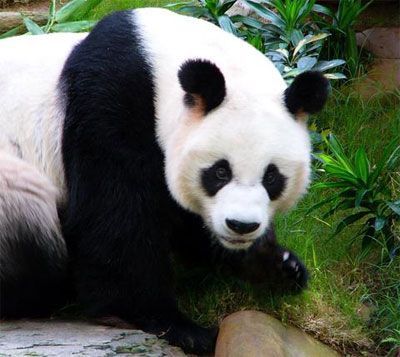Reclusive herbivores, giant pandas once enjoyed a wide range in southern China. However, habitat destruction and poaching for their valuable fur have killed off most of them, leaving only about one thousand in the wild.
The ancestors of the giant panda were carnivores, but its diet has evolved into one of mostly stalks and roots of the slow-growing, nutrient-poor bamboo.
Advertisement
It spends ten to sixteen hours a day eating the twenty to forty pounds (9 to 18 kg) of bamboo it needs for its daily quota.
It forages over a large area to get enough; a typical home range is about 1.5 to 2.5 square miles (4 to 6.5 sq km).
The solitary panda comes together with others only to mate.
Advertisement


